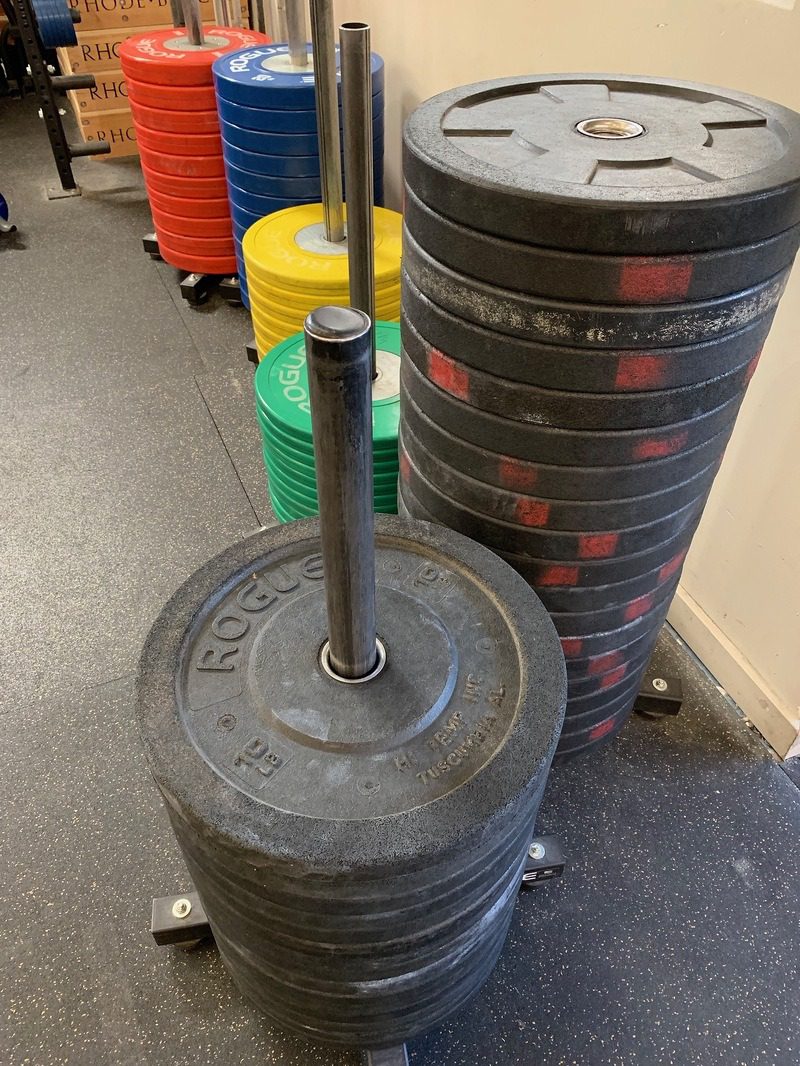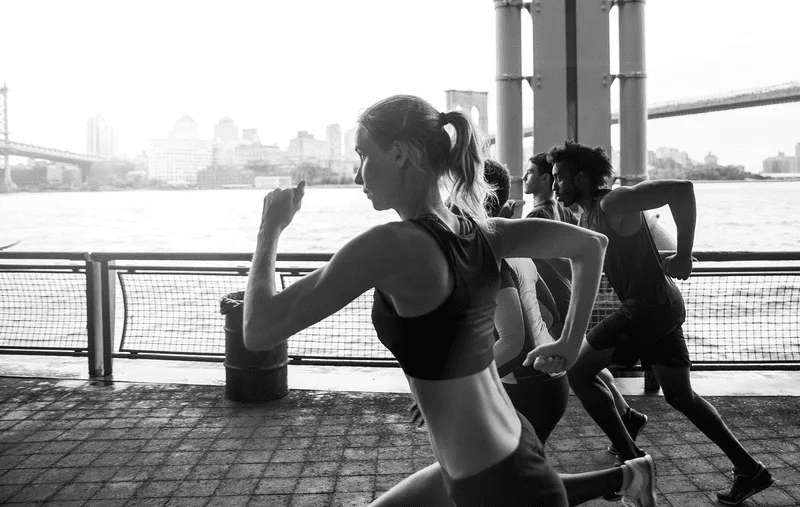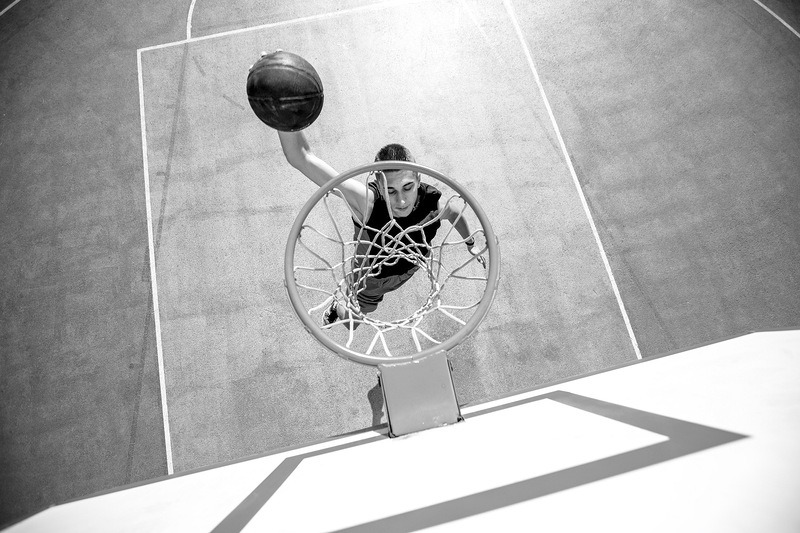Performance Psychology 2.0 (Part 2): Self-Regulation
MindsetABOUT THE AUTHOR

Jared Cohen
Jared Cohen is a mental/physical fitness performance coach. He believes that each client is the master of their own fate. He is driven to guide people to become better learners so that they can develop their own talent and discover their potential. As a coach, Jared strives to be the catalyst for those “aha” moments that go beyond the gym. Specifically, he is passionate and curious about the learning process that supports skill transferability in all aspects of life. Jared’s journey into coaching fitness began in 2010 when he discovered CrossFit as a means to deal with some health problems. Since then, he has been incredibly active in the intersecting worlds of health, wellness, fitness, and performance psychology coaching: having completed his CrossFit L1, several CrossFit specialty workshops, SEALFIT/Kokoro camp, Jill Miller’s Yoga Tune Up trainings, FRC, Catalyst Athletics Olympic Weightlifting, RKC, MovNat, and XPT. Jared provides mental skills, strength and conditioning, and mobility coaching. He has his M.A. in Sport Psychology from John F. Kennedy University, and he is currently finishing up his MBA from John F. Kennedy University as well. He is also a certified Athlete Assessments consultant, which uses the DISC behavioral profiling assessment to help athletes, coaches, and sport managers develop more self-awareness of their behavioral preferences. Jared coaches at Oak Park Los Angeles (home of CrossFit Los Angeles and The Body of Knowledge podcast). He can also be found at his personal website cpbgrowth.com or at behindthepodiumpodcast.com of which he is the co-founder/co-host.
Self-awareness gives us insight, while self-regulation helps us take appropriate action.
Awareness of self is essential if high performance is important to you. Yet it’s only as valuable as the changes you’re willing to make in service of the outcome you seek.
We can define self-regulation as the ability to adapt human behavior due to context-specificity, intended outcomes, and the interplay between these two. As I often tell my students at Oak Park, situation x behavior = results.
// Practice vs. Competition
The outcomes you want from practice and competition are rarely the same because contextually they are in service of different results.
Why do we practice? Most importantly, we do it in service of learning. Whereas the purpose of competition is to test ourselves against a previous version of ourselves or others. The behaviors that support a result in which learning is the highest priority are often going to be different from the behaviors that support testing our current level of ability.
Sports psychology is most often thought about in terms of someone who performs well in practice but consistently falls flat during games. This example points to how behaviors that serve well in one context may no longer be sufficient to do the same in a different context. To help people be their best, you have to guide athletes on how to adapt their behaviors and either indulge or suppress their natural tendencies accordingly.
One way in which you guide behavioral adaptation is by example, like adjusting your own behaviors depending on whether you are coaching during practice or competition. For example, during practice, I will provide a lot more feedback on someone’s efforts (“how to” guidance) to support the learning process. Whereas, during competition, I will provide more instruction than feedback (“what” guidance) to support the athlete accomplishing the task at hand without them getting bogged down in over-thinking.

Two behavioral approaches worth taking a closer look at as they relate to situational specificity are the behaviors of analysis versus the behaviors of intuition.
- When we’re in analytical mode, we have narrower bandwidth of focus and are concentrating on one or two measurables, prioritizing precision.
- Whereas when we’re behaving more intuitively, our bandwidth becomes broader and we’re acting in a more spontaneous and improvisational manner.
While there are times that practice is intuitive, it leans toward the analytical side more often than not. In such a situation, we’re usually more risk averse and are trying to control the variables more tightly. Come game time, we’re usually more likely to take risks and express our skills in unexpected ways, as we problem-solve in real time and function in the dynamic chaos of competition.
The transition from practice to competition could be likened to an open ocean swimmer who does most of her training in a pool. She’s honing necessary skills and work capacity with endless laps, but when she gets out in the ocean, it’s an open, uncontrolled environment in which she must adapt in real-time to the tide, chop, and weather.
Another way to think of this contrast is that analysis is more like solving a puzzle using existing information to put the pieces together. Whereas intuition is analogous to solving a mystery where your clues present themselves randomly and a lot is unknown (like Benedict Cumberbatch’s cases in Sherlock).
People tend to prefer the nature of either practice or competition based on their behavioral tendencies. Those who have a greater inclination toward competition but disdain practice (think: Allen Iverson) often do well for a time but then plateau because they’re unwilling to continue developing their skills away from the court. Whereas those who favor practice can sometimes have trouble with the chaotic, pressure-cooker environment that competition puts them in.
Both groups can learn to modulate their default behaviors to thrive in practice and games alike.
// 4 Steps to Better Self-Regulation

How many times do we say to others or ourselves, “That’s just the way I am”? While we can’t deny that we have certain predilections, such talk can be very self-limiting and defeating. Our nature is a real thing, yet as human beings bestowed with the power of rational thought and agency, we have more say in how we act and perform than the confining narratives we construct might have us believe.
1. Awareness
This is the necessary first step that we outlined in part one of this series. But becoming more self-aware isn’t much use in isolation. It’s all very well to be able to assess ourselves and the situations that we find ourselves in, but we need to then learn how and when to adapt our behaviors.
2. Willingness
In his book Who Are You Really, psychologist Dr. Brian Little describes self-monitoring as a trait that can be trained just as much as any physical skill. When we start to think about willingness to modify our actions in response to context and desired outcome, what we’re talking about is the balance between retaining fidelity to one’s self and adapting to the demands of any given situation like a chameleon.
3. Regulation
This is the act of adapting your behaviors in real time to best serve the result(s) you seek while considering the context of the situation.
4. Authenticity
Claiming that we’re this kind of person or that kind of player is often our attempt at being authentic and true to who we really are. On the contrary, Little says in his TED Talk, “Authenticity is not a singular thing. In fact, there are multiple ways to be authentic with flexible strategies for engaging ourselves and the world.” Altering your behavior to perform better in the moment isn’t selling out or being disingenuous – it’s pragmatism based on greater self-awareness and self-control, and often serves us better than if we just defaulted to the actions that come most naturally.
// Me, My Environment, And I
Another self-regulation consideration is how to reconcile our own tendencies with the influence of the world we find ourselves in. I am going to refer to Dr. Little’s categorization of biogenic, sociogenic, and idiogenic factors to map the terrain of self-regulatory options.
Your Title Goes Here
Your content goes here. Edit or remove this text inline or in the module Content settings. You can also style every aspect of this content in the module Design settings and even apply custom CSS to this text in the module Advanced settings.
Biogenic Factors
- Biogenic factors refer to one’s genetics and the associative personality traits, deeper levels of wiring and “doing what comes naturally.”
Sociogenic Factors
- Sociogenic elements acknowledge social norms, societal conventions, and real or imagined expectations of others. In the case of the latter, a female coach might feel pressure to behave or communicate in a certain way that goes against her inbuilt tendencies. How she chooses to reconcile this disparity will largely determine her actions and self-regulatory modulation.
Idiogenic Factors
- Then there are idiogenic elements. These revolve around what’s truly important to you, your values, and your short-term and long-term goals. Sometimes we can self-regulate so that we behave in a way that appears to defy what society expects and how we’d usually act, but doing so is the right course because it aligns with our ambition and sense of purpose.
We cannot discount biogenics, sociogenics, or ideogenics, but neither should we consider ourselves to be prisoners of their influence. Self-regulation involves being aware of all three, and then choosing (and it almost always is a conscious choice) how best to behave given the context.
Such adaptations require physical, cognitive, and emotional energy, so we do not have an infinite capacity to self-regulate in a way that goes against biogenics, sociogenics, and/or ideogenics all day, every day.
Think of a rubber band. It can stretch a bit and to a certain point, this provides elastic energy. But beyond this, the band will start to fray and eventually snap. Consequently, we must carefully pick and choose when and how to self-regulate in service of the situation, the intended result based on the situation, and the individual needs of our athletes.
// Confidence, Agency…and Marshmallows
Psychologist Dr. Albert Bandura is best known for coming up with the social cognitive theory, which involves the interplay between self-efficacy (belief in one’s ability to achieve a specific goal, AKA: confidence) and self-regulation. Bandura’s research showed that people are not machines that merely react to a stimulus, but, rather, sentient human beings who can cognitively filter and interpret our environment and, based on such interpretations, take ownership of our resulting response.

Reciprocal determinism (interplay between personal and environmental factors) is another component of Bandura’s social cognitive theory, which helped to bridge the gap between cognition and behavior, two areas of study that had previously been siloed. Another pioneer during this time was Dr. Walter Mischel. He was best known for an experiment that offered children one marshmallow now or two later. He then correlated the desire for either immediate or delayed gratification with success later in life.
In reading about this study, many people have made the mistake of believing that it implies that we always default to our natural tendencies, and that these are fixed from birth. But Mischel actually concluded that people are fundamentally flexible.
“What my life has been about is in showing the potential for human beings, to not be the victims of their biographies — not their biological biographies, not their social biographies,” he wrote in his 2014 book, The Marshmallow Test: Mastering Self-Control. “And to show, in great detail, the many ways in which people can change what they become and how they think.”
Another psychologist, Dr. Stanley Milgram (famous for the study in which participants were ordered to deliver a shock to a person they couldn’t see but could hear) has been cited as saying something similar to both Bandura and Mischel: “People can use their wonderful brains to think differently about situations, to reframe them, to reconstrue them, to even reconstrue themselves.”
// Self-Regulation and The DISC Method
We’ve explored some theoretical ways to think about self-awareness and self-regulation. To get a more objective view of yourself, your fellow coaches, and your athletes, you could undergo a formalized assessment.
At Oak Park, I’ve found the DISC Method to be particularly useful in this regard (I administer Athlete Assessments’ version of DISC). It was first proposed by William Marston in his book Emotions of Normal People in 1927. Industrial psychologist Walter Vernon took Marston’s concepts and developed them into a potent behavioral assessment tool that became popular in workplace culture in the 1950s and is still widely used today.
The acronym DISC has four main categories:
Dominance – How directly you approach challenges and assert yourself.
Influence – How you communicate with people and facilitate social interactions.
Steadiness – Pace at which you act, how supportive you are, and the degree to which you actively listen to others.
Conscientiousness – How analytical you are and the degree to which you follow rules, systems, and processes.
The DISC assessment is useful for determining how we’re likely to act and can go a long way to developing better self-awareness. This in turn can help you self-regulate more appropriately given your increased knowledge of self and greater understanding of how your defaults either jive with or contradict the needs of specific situations and intended results.
However, as discussed above, the tendencies that a DISC assessment reveals are not set in stone. In fact, they’re malleable and you have the power to control how you speak and act. Even if you’re a “high” D, I, S, or C – meaning that you lean this way more often than not – self-regulation is all about balancing the four sets of tendencies so your behavior best fits the outcome you’re aiming for.
// Remember the Titans
One of the most powerful and vivid portrayals of self-regulation that I can recall is found in the film Remember the Titans.
When Coach Bill Yoast (played by Will Patton) is passed over for the head coaching job at T.C. Williams High School, he’s resentful of the man he believes took the role that was rightfully his, Coach Herman Boone (played by Denzel Washington). The school’s administrators and boosters – some of them fueled by racism – agree, and conspire with a referee to fix a game so the team loses. That way, they figure, Boone will be fired and Yoast can take over as head coach. At first, Yoast is content to go along – after all, he covets the job and still feels hard done by. But at a certain point, he can’t stand idly by and let the deception continue. So, he tells the ref to knock it off and rallies his players to stage a dramatic comeback.
This scene showcases two very different behavioral styles – the dominant Boone is a classic “high D” in the DISC Model and thus primarily behaves in aggressive, direct, blunt, and goal-oriented (as opposed to people-focused) ways. In contrast, Yoast is a “high S” who’s so supportive of his players that Boone accuses him of coddling them. Though this means they complement each other very well in some ways, it can also cause conflict.
In the case of the pivotal incident in the movie, Yoast is reluctant to speak up because he is more naturally inclined to be non-confrontational and doesn’t want to rock the boat. But he realizes the injustice of the conspiracy against Boone who, for all their differences, he has come to begrudgingly admire. Yoast also recognizes it’s in the best interests of the team and his players to win this game and have a successful season. Therefore, Yoast regulates his behaviors in opposition of his biogenic and sociogenic (what the boosters and administrators wanted) factors by adapting from his natural tendencies of behaving higher in Steadiness to behaving higher in Dominance in order to influence the result of the game. In doing so, he helps Coach Boone keep his job.
You might never get a movie made about your coaching exploits. But nonetheless, you have the opportunity to follow Coach Yoast’s example in how you self-regulate in response to your growing self-awareness. In doing so, you will not only advance your own coaching craft, but also become a better servant-leader to your coaching colleagues and athletes.
Are you a better coach after reading this?
More coaches and athletes than ever are reading the TrainHeroic blog, and it’s our mission to support them with useful training & coaching content. If you found this article useful, please take a momemnt to share it on social media, engage with the author, and link to this article on your own blog or any forums you post in.
Be Your Best,
TrainHeroic Content Team
HEROIC SOCIAL
HEROIC SOCIAL
TRAINING LAB
Access the latest articles, reviews, and case studies from the top strength and conditioning minds in the TH Training Lab

